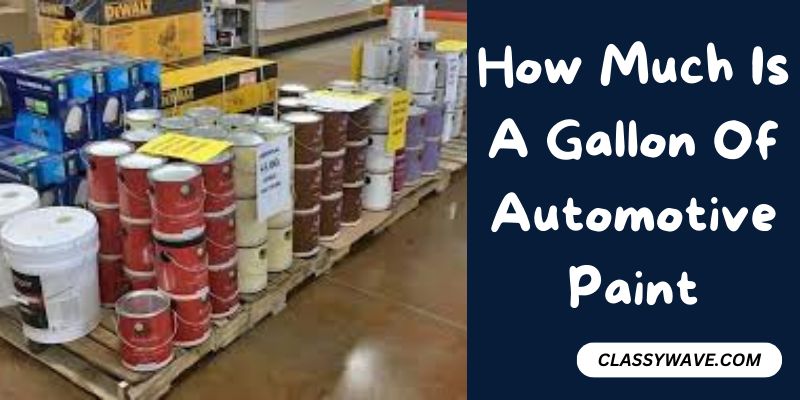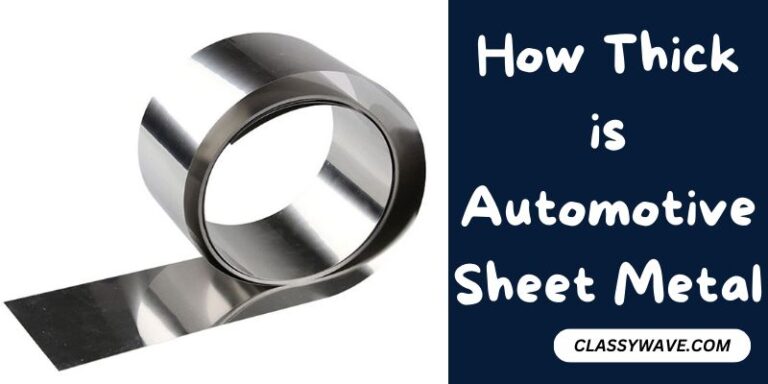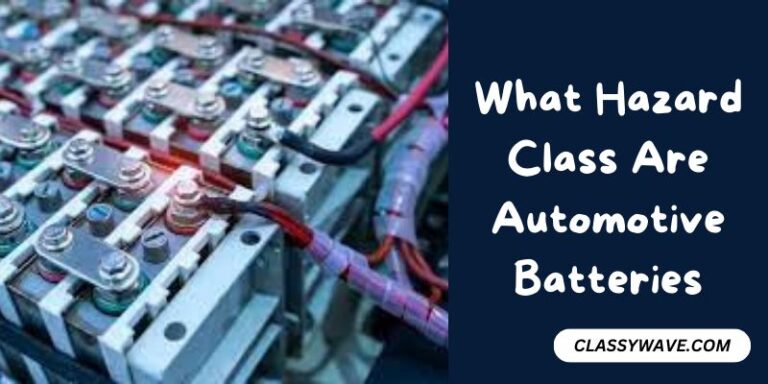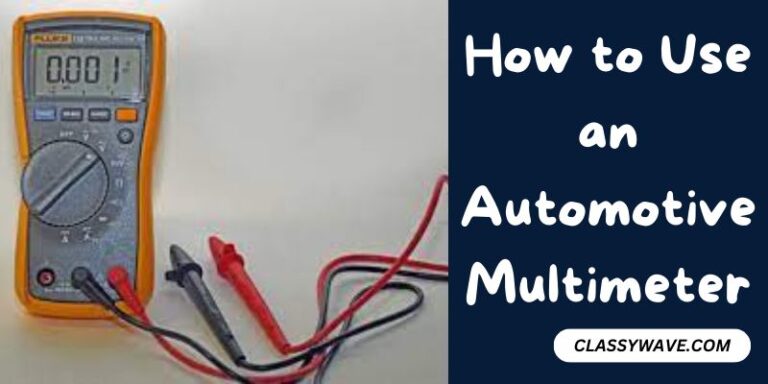How Much Is A Gallon Of Automotive Paint – Complete Guide
If you’re planning to give your car a fresh, vibrant look, one of the first questions that may cross your mind is, “How much is a gallon of automotive paint?” Choosing the right paint is crucial, as it not only affects your car’s aesthetics but also its protection against the elements. In this guide, we’ll delve into the intricacies of automotive paint pricing, helping you make an informed decision without breaking the bank.
I. Introduction
A. Definition of Automotive Paint
Automotive paint goes beyond aesthetics; it serves as a protective layer for your vehicle’s exterior. Composed of pigments, binders, and solvents, it enhances the durability of the underlying metal and provides resistance to corrosion.
B. Importance of Choosing the Right Paint
Selecting the appropriate automotive paint is not just about color preference; it’s about ensuring longevity and safeguarding your investment. The right paint can shield your car from harsh weather conditions, UV rays, and everyday wear and tear.
C. Factors Influencing the Cost of Automotive Paint
The cost of automotive paint varies widely, influenced by several factors. From brand reputation to the type of finish, understanding these elements is crucial for making a cost-effective choice.
II. Understanding Gallons and Coverage
A. Gallon as a Standard Measurement
Automotive paint is typically sold in gallons, making it essential to understand this standard measurement. Knowing how much area a gallon covers is fundamental to calculating the quantity needed for your project.
B. Coverage per Gallon
The coverage per gallon varies among different paints. Some high-quality options may require fewer coats, while others with specialized effects might have lower coverage. Understanding this aspect helps estimate the overall cost accurately.
C. Calculating Paint Needed for a Project
Before making a purchase, it’s wise to calculate the amount of paint required for your specific project. Consider the size of your vehicle, the desired number of coats, and any intricate details that may affect coverage.
III. Types of Automotive Paint
A. Overview of Different Paint Types
Automotive paints come in various types, including acrylic, enamel, and urethane. Each type has unique properties, affecting factors such as drying time, durability, and appearance.
B. Prices and Features Comparison
To make an informed decision, compare the prices and features of different paint types. While some may be budget-friendly, others may offer additional benefits, such as resistance to fading or easy application.
C. Pros and Cons of Each Type
Understanding the pros and cons of each paint type helps you align your preferences with your project’s requirements. Consider factors like ease of application, longevity, and the level of expertise needed.
IV. Factors Affecting Automotive Paint Pricing
A. Brand Reputation
Well-established brands often come with a higher price tag. However, they may offer a guarantee of quality and consistency. Assessing brand reputation is essential for those prioritizing reliability over cost.
B. Quality of Ingredients
The ingredients used in automotive paint significantly impact its price. High-quality pigments and binders contribute to better coverage, longevity, and overall performance.
C. Specialized Finishes and Effects
If you’re looking for a unique finish or special effects, be prepared to pay a premium. Customized and specialized finishes add a layer of complexity to the manufacturing process, affecting the final cost.
V. Shopping Tips for Affordable Automotive Paint
A. Researching Brands and Reviews
Before making a purchase, research different brands and read customer reviews. Real-world experiences can provide valuable insights into the quality and performance of specific paints.
B. Taking Advantage of Promotions and Discounts
Keep an eye out for promotions, discounts, and bundle deals offered by manufacturers or retailers. Timing your purchase strategically can result in significant savings.
C. Considering Alternative Sources
Explore alternative sources, such as online marketplaces or local suppliers. Sometimes, smaller or less-known brands offer quality products at a more affordable price point.
VI. Professional vs. DIY Painting
A. Cost Comparison
While professional painting services may guarantee a flawless finish, they come at a cost. Evaluate the expenses involved in hiring a professional versus undertaking a DIY painting project.
B. Skill and Equipment Requirements
Consider your skill level and the equipment needed for a successful DIY paint job. Some paints may be more forgiving for beginners, while others require advanced skills and specialized tools.
C. Pros and Cons of Each Approach
Weigh the pros and cons of professional painting and DIY projects. Factors such as time, budget, and desired outcome play a crucial role in deciding the most suitable approach for your needs.
VII. Case Studies
A. Examples of Automotive Paint Projects
Explore real-world case studies to gain insights into different automotive paint projects. Understand the challenges faced, the costs involved, and the final results achieved.
B. Cost Breakdown and Lessons Learned
Analyze the cost breakdown of featured projects and learn valuable lessons from others’ experiences. This practical approach helps in avoiding common pitfalls and optimizing your budget.
VIII. Common Misconceptions
A. Myth-Busting on Automotive Paint Pricing
Dispelling common myths around automotive paint pricing is essential for making informed decisions. Unravel misconceptions and gain clarity on what truly influences the cost of paint.
B. Addressing Common Consumer Concerns
Consumers often have concerns about paint quality, longevity, and application. Addressing these concerns ensures that potential buyers are well-informed and confident in their choices.
C. Clarifying Industry Standards
Clarify industry standards and regulations related to automotive paint. Understanding these standards ensures that you make choices that align with both your preferences and legal requirements.
IX. Future Trends in Automotive Painting
A. Innovations in Paint Technology
Stay ahead of the curve by exploring emerging trends in automotive paint technology. Innovations in formulations and application methods can influence both performance and cost.
B. Environmental Considerations
As environmental awareness grows, consider the eco-friendliness of different paint options. Some paints may be formulated with reduced environmental impact, aligning with sustainable practices.
C. Impact on Pricing and Availability
Understand how future trends may impact the pricing and availability of automotive paint. Being aware of industry shifts helps you plan for potential changes in the market.
X. Conclusion
In conclusion, determining the cost of a gallon of automotive paint can vary significantly based on various factors such as brand, type, and quality. The automotive paint market offers a range of options, from budget-friendly choices to high-end, premium products. Factors like the specific requirements of the project, the desired finish, and the brand’s reputation all contribute to the overall price. It is advisable for consumers to carefully assess their needs, conduct thorough research, and consider product reviews to make an informed decision. While the price may be a crucial factor, the quality of the paint and its suitability for the intended purpose should remain at the forefront of the decision-making process. Ultimately, investing in high-quality automotive paint can contribute to a durable and visually appealing finish, ensuring satisfaction and longevity for any automotive project.
FAQs
Is expensive automotive paint always better?
Expensive paints often come with higher quality, but the best choice depends on your project’s needs and budget.
Can I use automotive paint for other purposes?
While designed for cars, automotive paint can be used for various projects, such as furniture or DIY crafts.
Do I need professional equipment for a DIY paint job?
Basic equipment is sufficient for many DIY projects, but intricate finishes may require specialized tools.
Are there eco-friendly automotive paint options?
Yes, some paints are formulated with reduced environmental impact, catering to eco-conscious consumers.
How can I ensure a long-lasting paint job?
Proper surface preparation, quality paint, and careful application are key factors in ensuring a durable paint job.







